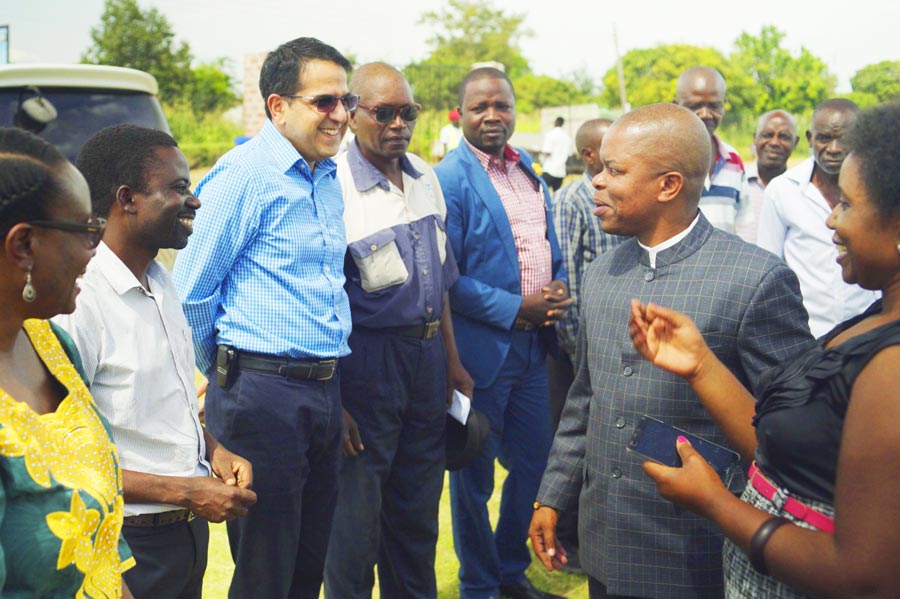The Bahá’í teachings encompass a profound commitment to the establishment of educational facilities as a means of uplifting communities and fostering knowledge. Their significance is particularly manifest in Zambia, where two remarkable new educational institutions have emerged as symbols of hope and progress. These facilities are not merely structures of brick and mortar; they represent a vision deeply rooted in the principles of unity, equity, and the moral imperative of education. Their inception marks a pivotal milestone in the ongoing journey toward the betterment of society.
The essence of Bahá’í teachings revolves around the transformative power of education. The belief that “education is essential for the upliftment of humanity” resonates strongly within the framework of Bahá’í philosophy. In Zambia, the establishment of these new educational facilities exemplifies this principle. The communities involved have not only embraced the physical infrastructure but have also become beacons of enlightenment. This highlights a common observation: the role of education in social emancipation and development. Yet, beneath this apparent simplicity lies a much deeper motivation rooted in cultural, spiritual, and social dynamics.
Zambia, with its rich tapestry of cultural influences and historical challenges, provides an engaging backdrop for understanding how the Bahá’í teachings manifest in tangible ways. The two new educational facilities serve diverse communities, reflecting the Bahá’í belief in the oneness of humanity. This universality is encapsulated in the aspiration to break barriers of division, be they tribal, racial, or socio-economic. As these facilities open their doors, they offer not just classrooms, but rather sanctuaries for collective growth and harmonious coexistence.
One cannot overlook the intricate relationship between knowledge and socioeconomic development. The Bahá’í teachings underscore the idea that education serves as a catalyst for change, empowering individuals to transcend their circumstances. In the context of Zambia, where educational access has historically been inequitable, the introduction of these new facilities is revolutionary. They embody a proactive approach to knowledge dissemination, promoting inclusivity and nurturing individuals who can subsequently contribute to the community’s advancement.
Moreover, these educational establishments are designed to foster not only academic excellence but also moral and ethical development. This dual focus encapsulates the Bahá’í emphasis on character building as an integral component of education. Students are encouraged to engage critically with not only the scientific and theoretical aspects of learning but also the ethical implications of their knowledge. Such a holistic approach prepares them to face future challenges with integrity and a sense of responsibility toward their community.
The architectural designs and curricular frameworks of these new facilities reflect the Bahá’í commitment to beauty, harmony, and innovation. Each design is a testimony to the values espoused by the Bahá’í Faith, aimed at creating environments conducive to learning and creativity. Integrating local cultural elements into their aesthetics not only fosters a sense of belonging but also honors the rich heritage of Zambia. This thoughtful integration encourages students to take pride in their identity while simultaneously embracing a global perspective.
Inherent in the establishment of these educational facilities is the recognition of the importance of female empowerment. The Bahá’í teachings ardently advocate for gender equity within education. In Zambia, educational initiatives targeting young girls are indispensable. By promoting equality in access to education, these facilities challenge societal norms and aim to dismantle long-standing barriers. Such efforts have profound implications, as educated women tend to invest in their families, communities, and future generations, thus exponentially enhancing societal well-being.
Furthermore, these institutions are poised to serve as community hubs, fostering collaboration among various stakeholders—parents, educators, and local leaders. This collaborative approach embodies the Bahá’í principle of collective action in striving for social transformation. Community involvement in the educational process deepens the impact of these facilities, ensuring that they address the specific needs and aspirations of the local populace.
The experiences cultivated within these educational environments also extend beyond academics. They provide platforms for dialogue and exploration of fundamental human rights, social justice, and moral development. Through extracurricular programs and community engagement initiatives, students learn the importance of teamwork and empathy, essential for cultivating a spirit of service and dedication to the common good.
As these two new educational facilities take shape and evolve, they stand as testament to the enduring relevance of Bahá’í teachings in addressing contemporary societal issues. They encapsulate a progressive vision that recognizes education as the bedrock of a unified and thriving society. By investing in these institutions, Zambia is investing in a brighter future, characterized by knowledge, mutual respect, and the flourishing of the human spirit.
In conclusion, the establishment of educational facilities in Zambia illustrates the dynamic interplay between the Bahá’í principles of education, community development, and the upliftment of humanity. As these institutions begin to fulfill their promise, they not only embody a pivotal milestone for Zambia, but they also contribute to a broader narrative of human progress. Ultimately, the successful realization of these ideals, driven by the Bahá’í teachings, holds profound implications for the future—one where the light of knowledge shines brightly, illuminating the path toward global unity.
